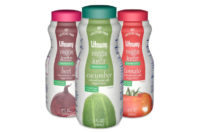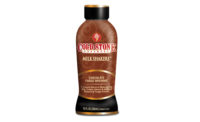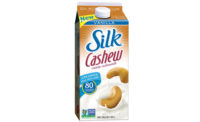Although cow’s milk has long been associated with good health, it has experienced gradual sales declines in the past two years as prices fluctuated and consumers avoided fat, calories and added sugars, according to Chicago-based Mintel’s April 2014 report “Milk, Creamers and Non-Dairy Milk – US.” As a result, alternative dairy brands are sweeping in and driving category growth by meeting consumer demands for nutrition and variety, it says.
Alternative dairy drinks have been the fastest-growing segment for the past two years, Mintel reports. In the 52 weeks ending April 20, the refrigerated kefir, milk substitutes and soy milk segment increased nearly 20 percent in dollar sales in U.S. multi-outlets, according to Information Resources Inc. (IRI). Almond milk’s recent surge in popularity is helping to drive this growth, Mintel’s report states. In fact, almond milk’s share of the category grew to 60 percent in 2013 from just 3 percent in 2008, Santa Monica, Calif.-based IBISWorld notes in its December 2013 report “Soy & Almond Milk Production in the US.” This growth came at the expense of soy milk, which has declined from accounting for 87 percent of the category’s revenue in 2008 to 30 percent in 2013, IBISWorld’s report states. Consumers have been switching from soy milk to almond milk because they consider almond milk to taste better and enjoy the lower calorie content of almond milk compared with soy milk, according to Chicago-based Euromonitor International’s November 2013 report “Drinking Milk Products in the US.”
IBISWorld’s report also notes that consumer demand for coconut milk is on the rise, building from the growing consumer awareness of coconut water as a sports drink substitute.
Flavored milks also are gaining interest among consumers, according to Mintel’s report. Flavored milks are becoming less targeted at children and more suitable for adult consumption, it states. Nearly two in five adult respondents said they are interested in sophisticated flavors for dairy products, according to Mintel’s survey. Flavored milks also are capitalizing on milk’s nutritional benefits, which could position them as a healthier but still flavorful alternative to carbonated soft drinks, the report adds.
Additionally, fortified dairy drinks and alternatives are getting more attention. According to Mintel, more than one in five respondents purchase dairy and/or non-dairy milk with added calcium, vitamins or other minerals. This includes protein, which could be targeted toward men to help the category compete against other products, the market research firm suggests.
More than half of respondents to Mintel’s survey agreed that dairy milk is a good source of protein. Although only 13 percent of respondents reported consuming dairy or non-dairy milk before or after exercise, more than a quarter of men between the ages of 18 and 34 said they consume it with exercise. Therefore, targeting activities popular with young men and women, and fortifying the drinks with other vitamins and minerals that promote recovery, could help fuel the category as a suitable, natural addition to exercise, the report states.
Mintel forecasts the dairy alternatives segment to surge through 2018 as con-sumers continue to demand healthful products and more innovations and as non-dairy milk blends enter the market, it adds. IBISWorld’s report notes a similar forecast but adds that the segment will face increasing competition from organic milk and private-label brands.





